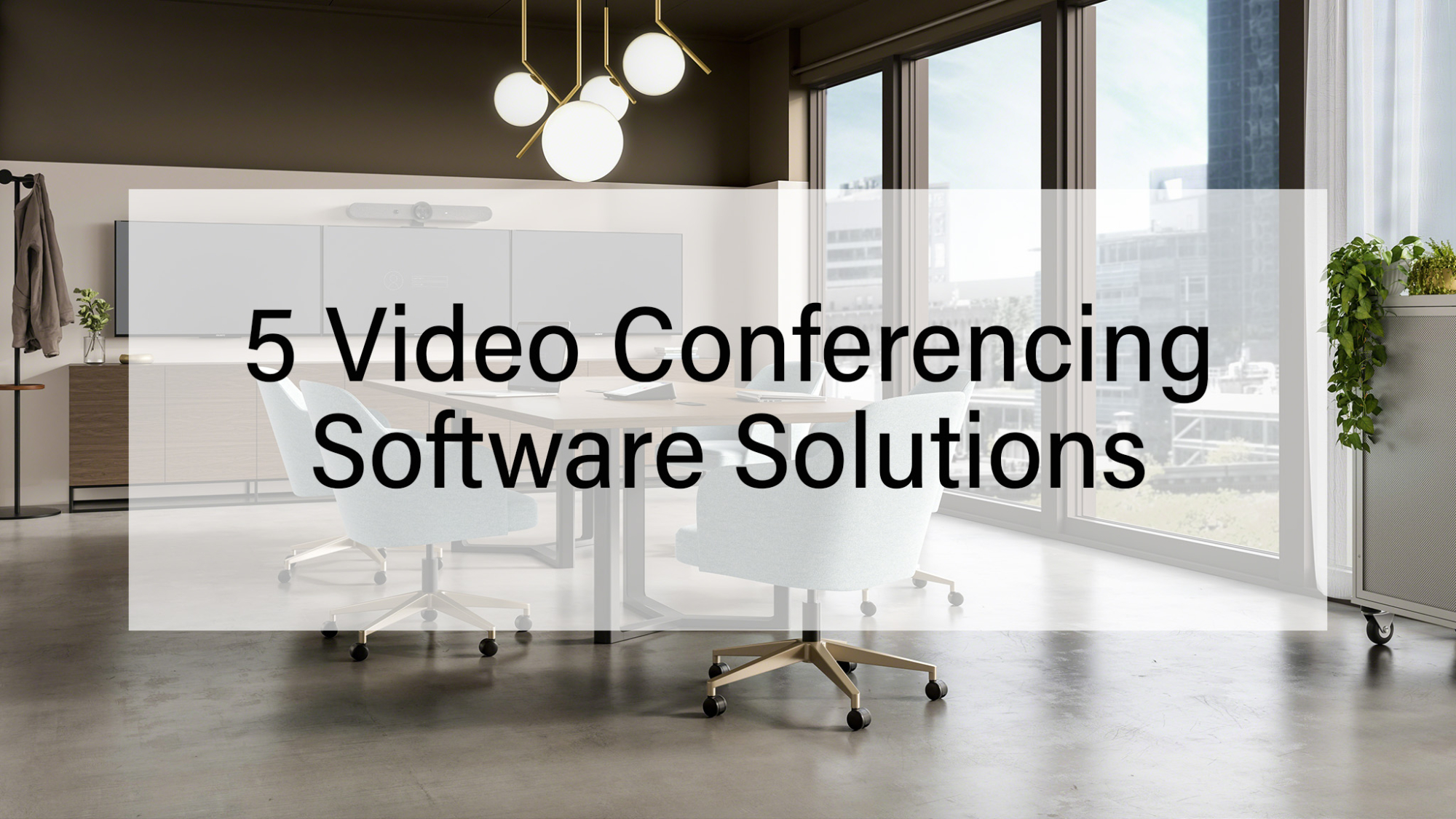Benefits of Video Conferencing
Many people think video conferencing was merely an effect of COVID-19. In reality, it has been around since the 1980s, with AT&T being the first organization to offer a reliable platform. COVID-19 simply accelerated an increase in platforms and solutions. Companies invested in them to reduce travel costs, connect teams from different locations, increase collaborations, and maintain productivity.
Video conferencing has proven to increase organizations’ productivity and collaboration rates. According to a study by Wainhouse Research, 94% of respondents agreed that video conferencing has allowed for shorter project lengths. In addition, they saw more flexibility, better work-life balance, and reduced company travel expenses by 30%. It is also a more effective communication alternative when compared to emailing and chatting because of its personal connection.
Most Popular Video Conferencing Solutions
Many types of video conferencing technology exist, and applications are constantly changing. Some of the most popular platforms available for businesses are Zoom, Microsoft Teams, Cisco Webex, Google Meet, and Skype. Each of these video conferencing platforms offer a free version to users. Additionally, they provide highly rated customer service support sites and 24/7 phone support. As of now, Zoom is the most widely used platform for video conferencing. Zoom offers users a free video-conferencing app and a subscription. Organizations can subscribe for more features and unlimited timed meetings. Due to its ease of use and the large number of users allowed on, features offered, reliability, cross-platform compatibility, and integration capabilities, Zoom is the most widely used platform. Zoom is not only useful for businesses but also for personal video conferences between friends and family.
Best Free Video Conferencing Platform
Video conferencing needs differ from organization to organization, but Zoom is widely accepted as the best video conferencing application for no cost. Unlike other known solutions, Zoom offers a free version that includes most of the same features as the paid version minus the time allowed for meetings and the number of users. Other applications such as Google Meet and Microsoft Teams offer free versions. However, but unlike Zoom, these systems are for business collaboration specifically. Zoom is the best video conferencing application if someone is looking for a free, limited version for their organization or personal use because it is easy to navigate.

Differences Between Zoom and Microsoft Teams
Although most video conferencing solutions offer similar features, there are a few differences between the two most popular: Zoom and Microsoft Teams. Although the platforms are similar, some differences are that Zoom allows for 100-1,000 users, depending on the paid plan, whereas Microsoft Teams can accommodate 250 users for most plans, and even reach up to 10,000 users in the most advanced plan. Additionally, Zoom offers more features that may not be essential for all business users. In contrast, Microsoft Teams focuses more on collaboration and business-focused features. Zoom offers more accessibility options such as closed captioning which is helpful for those with impaired hearing and disabilities.
Negatively, Zoom’s free plan only allows users in a group call to video call for 40 minutes. Meanwhile, those on one-on-one calls receive an unlimited amount of time. Meanwhile, Microsoft Teams allows users to call for an unlimited amount of time with their free option whether it is a group or individual call. Microsoft Teams thoroughly integrates with Microsoft Office Suite. Users can multitask easily and access other Microsoft applications while collaborating. Both Zoom and Microsoft Teams emphasize the importance of privacy and security, with each platform using extensive protocols to ensure user safety.
For even more comparison between the two systems, check out our Zoom vs. Microsoft Teams: Which Is Better For Your Org? Blog.
What You Should Look for When Choosing a Video Conferencing Platform
When trying to select the best video conferencing platform for your business, there are many key factors you should look at such as the video and audio quality offered, screen sharing capabilities, recording and playback, chat and messaging, integration and collaboration, mobile support, and security and privacy. Although businesses and their needs with video conferencing differ, these are key features that should not be neglected when choosing the best video conferencing platform.
To learn more, read our blog, “Examples of Video Conferencing Communication”
How OEC Can Help
While the first step an organization must take is selecting a video conferencing platform that works for their needs, there are many other factors that play a role in seamless video conferencing. Those include, procuring the best technology within budget, installing those systems correctly, and integrating them into the organization’s regular work flows. At OEC, we help companies find the best video conferencing equipment to fits their needs. We offer all-in-one solutions, room controllers, cameras, sound bars, and more to cater to the growing need for video conferencing equipment. Visit our website to contact us with inquiries!
Receive our Newsletter
To receive our newsletter, including new editions of spaces and other digital content, fill out the form:



